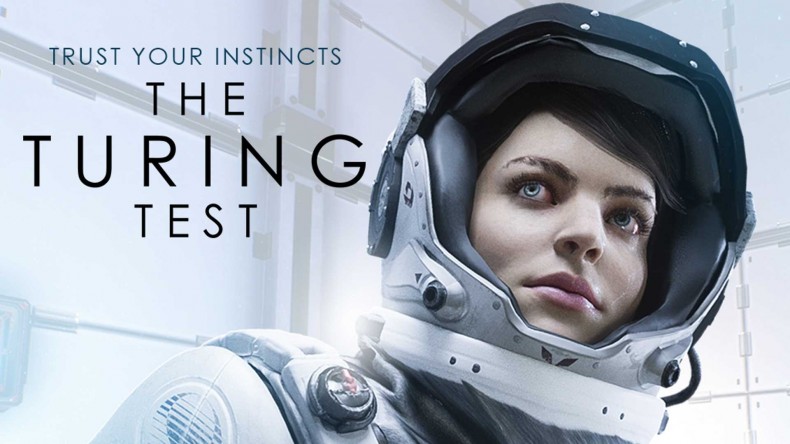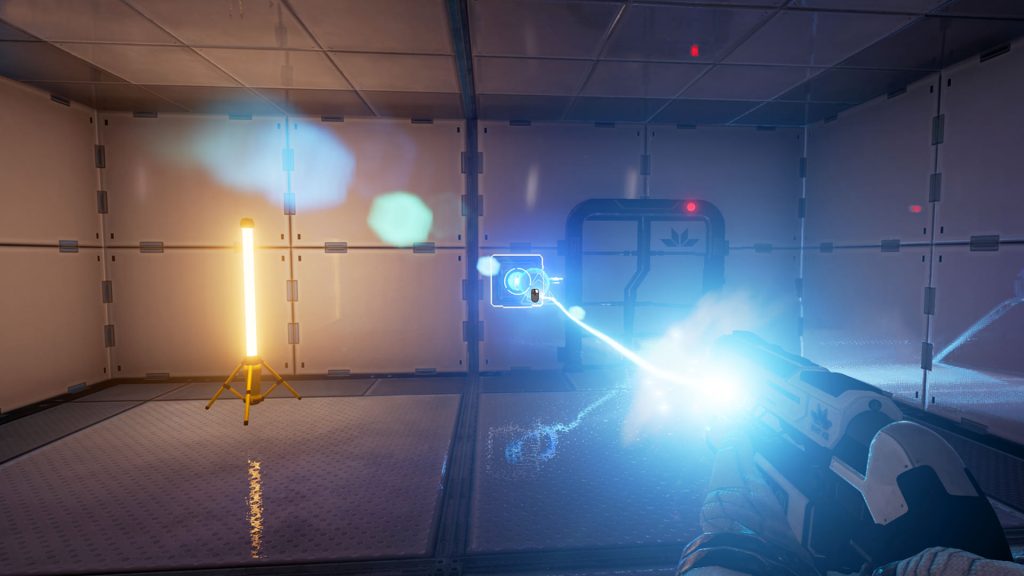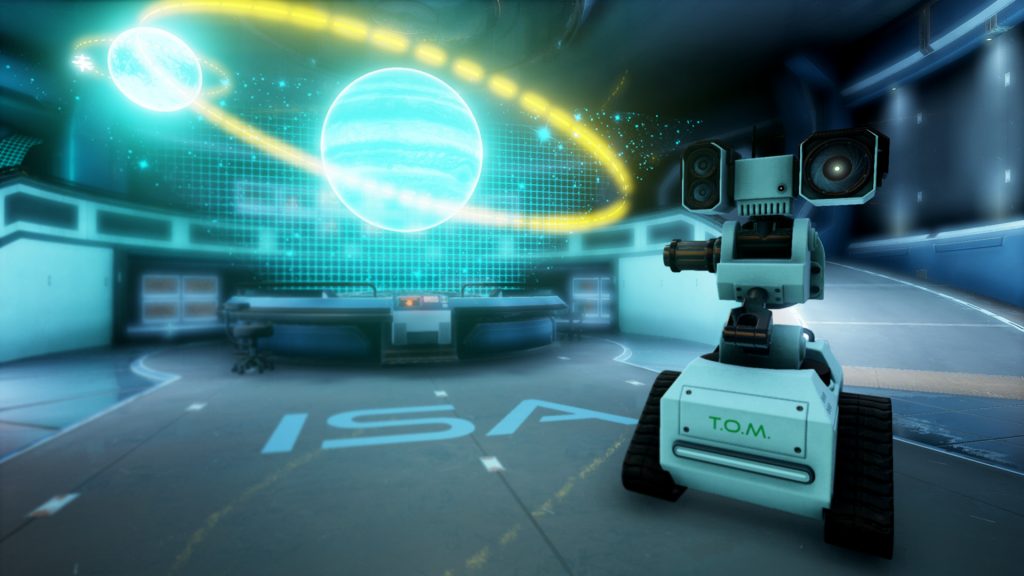[Review] The Turing Test (2016)

Will you pass the test?
The Turing Test is a first-person puzzle game created by Bulkhead Interactive, released for Microsoft Windows and Xbox One in 2016, PS4 in 2017, and Nintendo Switch and Stadia in 2020. A sci-fi setting and sense of intrigue propel the player through numerous levels, charmingly reminiscent of the Portal games.
Engineer Ava Turing has been awoken from cryosleep to determine why her research team on Europa has stopped communicating with the expedition’s AI, T.O.M. Upon reaching the base, Ava and T.O.M. find it has been completely repurposed and the researchers are nowhere to be found. The sectors have now become a series of puzzles only solvable by a human, or “Turing tests.” (The “Turing test” was developed by Alan Turing in 1950 to judge whether an artificial intelligence could pass for a human, in simple terms.) Ava must pass these tests to discover why the researchers would barricade themselves in, or learn what they were trying to keep out.
The puzzles themselves are staggered in difficulty, with easier ones interspersed among harder ones, which gives the pacing a sense of both variety and motivation. There were times I said out loud, “I’m overthinking this,” and every so often, I was. The developers engineered some brilliantly designed levels that players will find challenging and gratifying.

I played The Turing Test on Stadia, and for a game released four years ago, it holds up extremely well visually. The style is sharp and clean, and the high-quality animation remains smooth, with no discernable glitches. There was a hiccup of load time between each level, but it was never long enough to be annoying or disorienting.
The deftness of the controls were also pleasantly surprising. I actually found myself having to turn down the sensitivity, since my brain doesn’t run at a similarly high frame rate. Movement for PC is controlled by a WASD system, with the mouse directing the camera and main interactive function. For me, the game rates very highly in immersion because of how smooth and realistic the character movement was.
Mellow piano tones woven through clean electronic music comprise most of the background music, lending a crispness to the persuasion of being in a futuristic space station on an ice moon. The electronic sounds will sometimes deepen and quicken to signal the near-end of a puzzle or emphasize a story beat, but they remain consistent with the overall tone.

Depending on how you approach your initial playthrough, there may be some replayability available. The main puzzles (about 60+) are static, but you will pass several doorways labeled “restricted area.” These seem to be extra puzzles, some of which are extremely difficult. I completed a few for fun and found that they led to bits of extra story. If you ignore them your first time through, you can give them a go on your next visit. The final scenario also features a choice, so you may want to play through several times to discover the various endings.
As indicated by its name, The Turing Test features themes on humanity and its coexistence with logic and empathy. A careful symphony of philosophical dialogue, sterile sci-fi environment, touch of mystery, and the dopamine rush of puzzle-solving make for a remarkable gameplay experience. I would absolutely recommend The Turing Test to anyone who wants to challenge their puzzling skills or just enjoys a well-crafted puzzle game, beginners and experts alike. Be you human or be you not?
